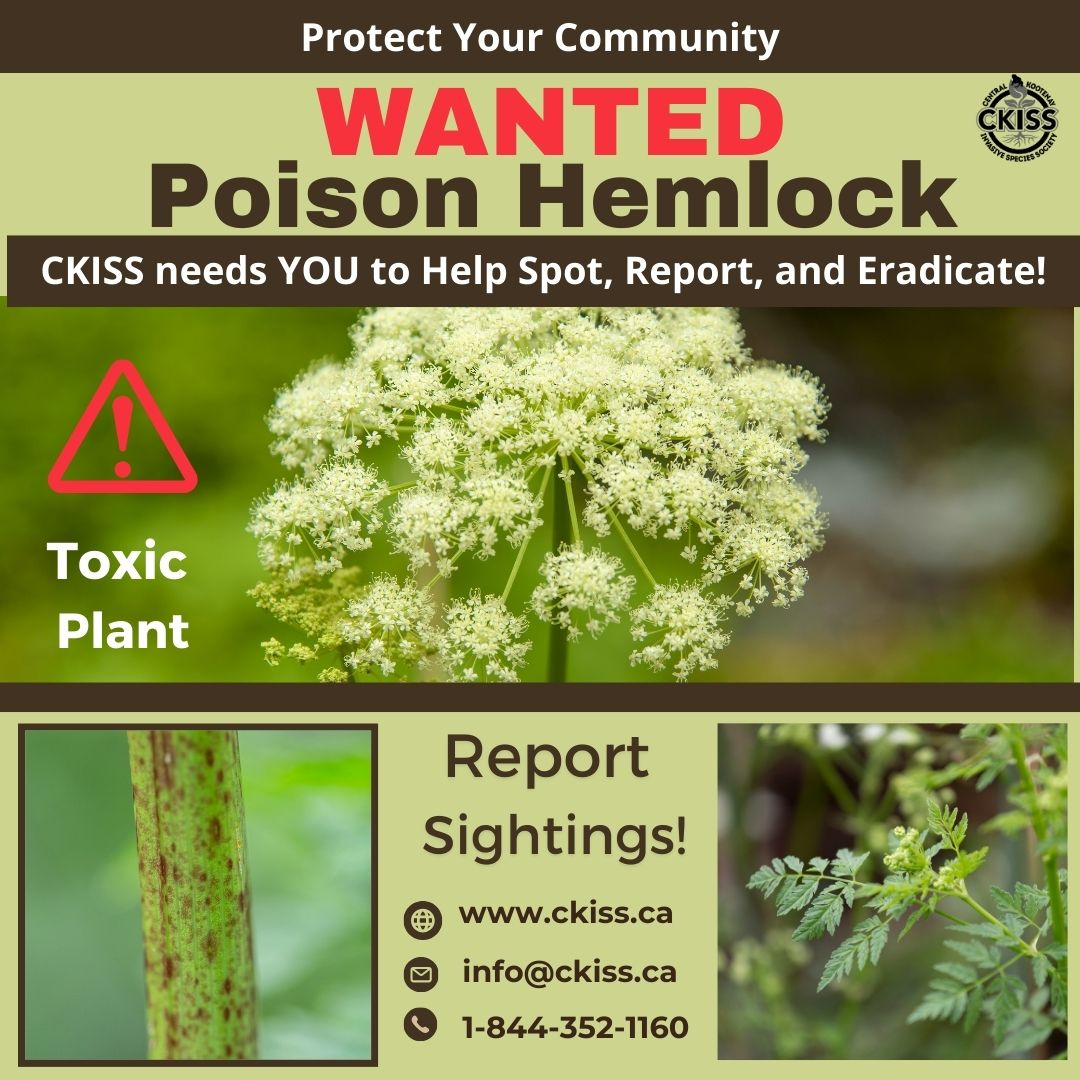We are calling on residents of Creston to play an active role in the new Community Poison Hemlock Eradication Plan by reporting sightings of the invasive plant, poison hemlock (Conium maculatum). The first crucial step in this initiative is to determine the extent and location of poison hemlock plants within the community.
Report Sightings:
If you spot poison hemlock, report it to CKISS by filling out this reporting form via our website, email info@ckiss.ca or call the CKISS hotline at 1-844-352-1160. Accurate reporting will help facilitate the mapping and management of Poison Hemlock across Creston.
The goal of the Community Poison Hemlock Eradication Plan is to empower the community, along with relevant landowners and landholders, to eradicate and prevent further incursions of poison hemlock in the CKISS region. By fostering a coordinated response to invasive species management, this project aims to support and inspire partners and residents to take action throughout the two-year project term and beyond, until Poison Hemlock is eradicated.
Poison hemlock (Conium maculatum) is one of the most poisonous plants in the world. Poison Hemlock also poses significant health, economic, and environmental threats. All parts of the plant are toxic to humans and animals, including livestock. Ingestion could cause respiratory failure and death in humans and deformities when ingested by pregnant livestock. Economically, its presence can lead to increased management costs for landowners and municipalities. Environmentally, poison hemlock can outcompete native vegetation, leading to habitat loss and reduced biodiversity. Its ability to spread rapidly and establish in disturbed areas further exacerbates its negative impact on local ecosystems.
“We want to inspire all community members and partners to take responsibility for managing poison hemlock in a coordinated, long-term approach,” said Laurie Carr, Executive Director at CKISS. “While there have been efforts by several partners to control poison hemlock, key stakeholders such as private agricultural and residential landowners, municipalities, and community members at large have not been adequately supported to take the necessary level of action.”
Poison Hemlock first appeared in the City of Creston in 2013. By 2016, it had spread to various locations, including Dodd’s Creek and the BC Wildlife Federation wetland next to Erickson Elementary School. The plant has also extended its reach to the CP rail lands, Lower Kootenay Band lands, and the Creston Valley Wildlife Management Area (CVWMA). Despite ongoing management efforts, several infestations remain untreated, notably along Dodd’s Creek, in the City of Creston, and on private residential and agricultural lands.
CKISS is managing Poison Hemlock in partnership with the Ministry of Forests, Ministry of Transportation, the Regional District of Central Kootenay, Fortis Energy, and the BC Wildlife Federation. However, due to the extensive nature of the infestations, community involvement is crucial.
In addition to reporting sightings, residents are encouraged to take action on their own lands and riparian habitats. Training and support will be provided by CKISS in the Spring of 2025 to ensure a coordinated and effective approach. If you would like to participate or assist in organizing a Poison Hemlock information and training session, please reach out to Laurie Frankcom, Education Program Coordinator, via email at lfrankcom@ckiss.ca.
By participating in this initiative, Creston residents can help protect local ecosystems, support biodiversity, and reduce the economic and health impacts associated with Poison Hemlock.
The CKISS recognizes the Habitat Conservation Trust Foundation, and the Province of British Columbia for making significant financial contributions to support the The Community Poison Hemlock Eradication Plan. Additional support has been provided by the Columbia Basin Trust and the Government of B.C.









